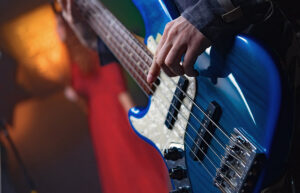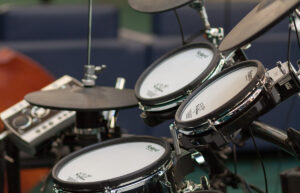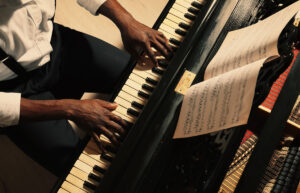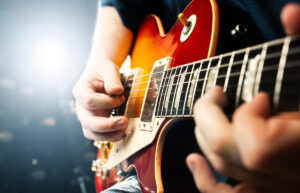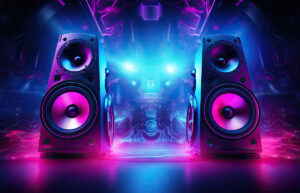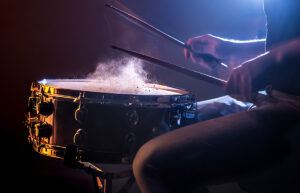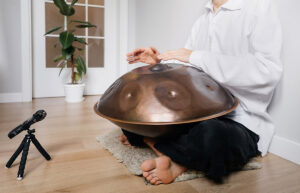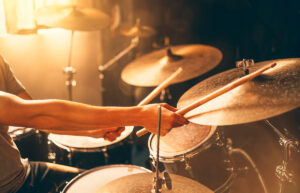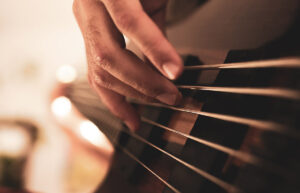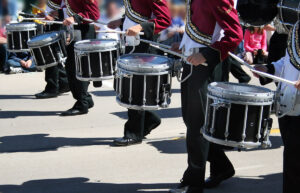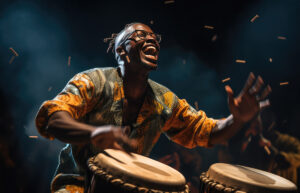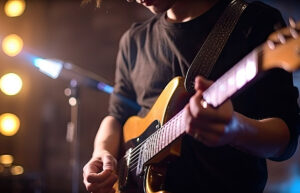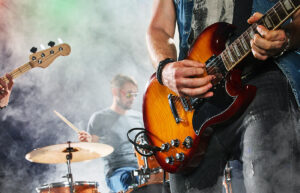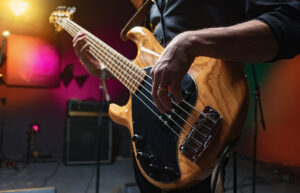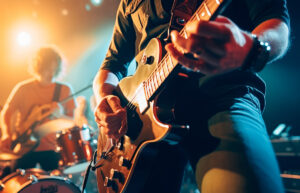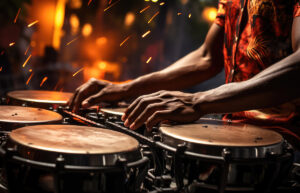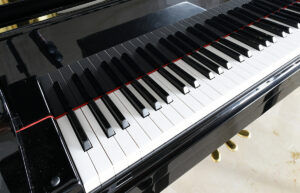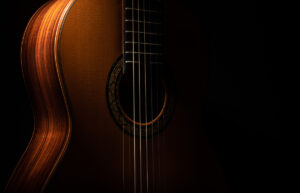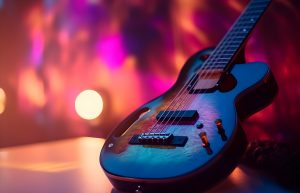Different Types of Drums Around the World

From Indian percussion to South American patterns, each drum beat weaves tales of cultural heritage, musical evolution, and rhythmic diversity. Whether you’re a seasoned drummer, a curious music enthusiast, or someone eager to tap into the vibrant world of drums, this article promises to uncover the unique sounds of various types of drums.
Welcome to TheDemoStop, now join the community!
Connect with artists, fans and producers around the world.
Types of drums
Drums are percussion instruments that generate sound through the impact of a struck surface, typically a membrane or drumhead stretched over a resonant shell.
Each type of drum set has unique characteristics, serving different musical contexts and styles. Whether rooted in cultural traditions or pushing the boundaries of modern sound, these drum sets contribute to the rich tapestry of global percussion.
There are various types of drums around the world:
1. Acoustic drums:

- Traditional drum sets with physical shells, drumheads, and hardware.
- Comprising a bass drum, snare drum, toms, hi-hat, and cymbals.
- Versatile and used in various music genres.
2. Electronic drums:

- Utilize electronic pads or triggers to produce sound.
- It offers a wide range of customizable sounds and is often used in modern genres.
- Compact and suitable for quiet practice or electronic music production.
3. Hybrid drums:

- Combine elements of acoustic and electronic drums.
- It may feature acoustic drums with electronic triggers or pads alongside traditional components.
- Offer versatility and the ability to blend acoustic and digital sounds.
4. Orchestral drums:

- Include instruments like timpani (kettle drums), snare, bass, and cymbals.
- Essential in classical orchestras, contributing to dynamic and rhythmic elements.
5. South American drums:

- Include diverse drums like congas, bongos, cajon, timbales, and pandeiro.
- It is rooted in Afro-Latin and indigenous traditions and integral to genres like salsa and samba.
6. European drums:

- Encompass drums like the bodhran, tabor, and tambourine.
- Associated with folk and medieval music traditions across Europe.
7. Indian drums:

- Include instruments like the Tabla and Mridangam.
- Integral to classical Indian music, featuring intricate rhythms and tonal variations.
8. Goblet drums:

- Feature a goblet or chalice-shaped body.
- Include drums like the Djembe, Bougarabou, and Udu from various global traditions.
Acoustic drums
Bass drum
- Size: The largest drum in the set provides deep, low-frequency tones and is played with a foot pedal.
- Versatility: It acts as the heartbeat of the rhythm section in many genres.
- Style: Often played on beats 1 and 3 in a standard 4/4 time signature.
- Set rhythm: Fundamental in establishing the rhythm and pulse of the music.
Snare drum
- Placement: Placed between the drummer’s knees, it has a set of wires (snare) underneath that produces a distinct, sharp sound.
- Structure: Features a set of wires or “snares” stretched across the bottom drumhead.
- Sound: Produces a sharp, cracking sound when hit, often providing the backbeat.
- Versatility: A versatile drum for accents, backbeats, and ghost notes.
Tom-tom(s)
- Mounted: Toms come in various sizes and are mounted on the drum kit, but floor tom-toms stand independently.
- Rhythm: Produce melodic and resonant tones.
- Uses: Used for fills, accents, and dynamic variations in a drum pattern.
- Numbers vary: The number and tuning of toms can vary based on drummer preference.
Hi-hat
- Structure: It consists of two cymbals mounted on a stand, played by pressing a foot pedal.
- Sound range: It offers a range of sounds from closed, tight “chicks” to open, sustained tones.
- Sound texture: Used for keeping time, creating dynamic patterns, and adding texture.
- Paired with snare drums: Often played with the snare drum for intricate rhythms.
Cymbals
- Different types: Comes in various styles, including crash cymbals for accenting, ride cymbals for continuous rhythmic patterns, and splash cymbals for quick, bright sounds.
- Placement: Positioned at different drum kit parts for diverse playing options.
- Dynamic: Contributes to the overall dynamics and character of the drum set.
Welcome to TheDemoStop, now join the community!
Connect with artists, fans and producers around the world.
Electronic drums
Electronic drum kit
- Pads: Replace traditional drum heads with electronic pads that can be rubber, mesh, or silicone.
- Sound module: Generates a variety of drum and percussion sounds. Allows customization of tones.
- Versatility: Offers a wide range of sounds beyond traditional drum kits, including electronic and synthesized tones.
- Silent practice: Ideal for quiet practice with headphones, making them suitable for home use.
- Recording capability: Some kits allow for MIDI or direct recording to a computer for music production.
Drum machine
- Sequencing: Programs and sequences pre-recorded drum patterns and beats.
- Sound library: Contains diverse drum sounds and often other percussion instruments.
- Editing: Enables users to customize and edit patterns, adjusting tempo, volume, and individual drum sounds.
- Portability: Compact and easy to carry, making them suitable for live performances and studio use.
- Integration: Can be integrated into larger music setups, syncing with other electronic instruments.
Hybrid drums
Acoustic drums with electronic triggers
- Integration: Combine traditional acoustic drums with electronic triggers.
- Expanded Sound Palette: Allows blending acoustic drum sounds with electronic samples and effects.
- Versatility: Drummers can maintain the feel of acoustic drums while incorporating electronic elements.
Electronic drums with wood shells
- Aesthetics: Feature electronic components but maintain the appearance of classic wooden drum shells.
- Feel: Provides drummers with a familiar playing experience akin to acoustic drums.
- Hybrid sound: Marries the benefits of electronic functionality with wood’s natural resonance.
Acoustic drums with electronic trigger pads
- Selective electronic enhancement: Traditional drums augmented with electronic trigger pads.
- Customization: Drummers can choose specific drums or elements to trigger electronically.
- Dynamic range: Combines the expressiveness of acoustic playing with the versatility of electronic sounds.
Orchestral drums
Timpani
- Tuning pedals: Equipped with foot-operated tuning pedals to adjust the pitch.
- Bowl-shaped copper or fiberglass shells: Provide resonant and melodic tones.
- Dynamic range: Capable of producing both powerful and delicate sounds.
- Commonly used in orchestras: Integral in classical and orchestral compositions, adding depth and dramatic impact.
Concert bass drum
- Large size: Typically has a diameter of 36 inches or more.
- Deep, resonant tone: Emits a low-frequency sound with a powerful, sustained quality.
- Mallets: Played with soft mallets or felt-covered beaters for nuanced control.
- Versatility: Used for accenting, creating suspense, or delivering thunderous effects in orchestral arrangements.
South American drums
Congas
- Tall, single-headed drums: Originating from Afro-Cuban traditions.
- Different sizes: Typically played in sets of two or more, each with a distinct pitch.
- Hand-played: Struck with the hands to produce varying tones.
Bongos
- Pair of small drums: Connected and played between the knees.
- Higher and lower pitch: Two drums—macho (small, high-pitched) and hembra (larger, lower-pitched).
- Versatile rhythmic patterns: Used in various Latin music genres.
Cajon
- Wooden box drum: Originating from Peru.
- Played by sitting: Drummer sits on the top surface and strikes the front or sides with hands or brushes.
- Adaptable percussion: Used in diverse musical genres, from flamenco to contemporary music.
Timbales
- Metal-shelled drums: Typically played in pairs with a high-pitched and a low-pitched drum.
- Tuned with a key: Adjustable to achieve specific pitches.
- Essential in Latin and Caribbean music: Adds brilliance and rhythmic complexity.
Pandeiro
- Handheld frame drum: A Brazilian tambourine.
- Jingles: Features metal jingles around the rim, creating a distinctive sound.
- Versatile: Used in samba, choro, and various Brazilian music styles.
Tassa drum
- Cylindrical drum: Originating from Trinidad and Tobago.
- High-pitched and piercing sound: Often used in Indian-influenced Trinidadian music.
- Played with sticks: Typically played with wooden sticks
Welcome to TheDemoStop, now join the community!
Connect with artists, fans and producers around the world.
European drums
Bodhran
- Irish frame drum: Traditionally made with a wooden frame and goatskin head.
- Played with a tipper: Typically played with a double-headed stick called a tipper.
- Celtic folk music: Commonly used in Irish and other Celtic musical traditions.
Tabor
- Medieval drum: Played in Europe during the Middle Ages.
- Two heads: Usually has two, one larger for a deep sound and one smaller for a higher pitch.
- Accompanied folk dancers: Often played alongside folk dancers and during medieval festivities.
Batih
- Eastern European drum: Associated with traditional music in countries like Poland and Ukraine.
- Wooden shell and animal skin: Similar construction to other folk drums.
- Diverse playing techniques: Played with hands, sticks, or mallets, depending on the musical context.
Indian drums
Tabla
- Pair of hand-played drums: Consists of two drums, the smaller Dayan (right) and the larger Bayan (left).
- Versatile sound palette: Used in classical, devotional, and popular music.
- Intricate rhythmic patterns: Tabla players often showcase complex rhythmic compositions.
Mridangam
- Double-headed barrel drum: Originating from South India.
- Carnatic Music: Integral to classical Carnatic music performances.
- Tuned by striking different areas: Produces a variety of tones by striking other parts of the drumheads.
Dholak
- Structure: Double-headed drum with a narrow middle and wider ends.
- Material: Typically made from wood with goat or synthetic drumheads.
- Festive Usage: Versatile and used in folk, devotional, and popular music across India.
Pakhawaj
- Structure: Double-headed drum with a barrel-shaped body, similar to the Mridangam.
- Material: Made from clay, with goat skin drum heads.
- Genre: Associated with Dhrupad and Dhamar styles of Hindustani classical music and devotional music.
- Sound Palette: Deep, resonant tones with a balanced spectrum, expressive and tonally rich, capable of intricate rhythms and melodic patterns.
Goblet drums
Djembe
- West African drum: Originating from the Mandinka people in West Africa.
- Goblet shape: Single-headed drum with a broad base and narrow top.
- Versatile: Used in various musical genres and often played with bare hands.
Bougarabou
- West African drum: Similar to the Djembe but with a longer body.
- Rich bass tones: Produces deep, resonant bass sounds.
- Traditionally played in ensembles: Often part of West African drum ensembles, contributing to intricate rhythms.
Udu
- African clay pot drum: Originating from Nigeria.
- Unique shape: Typically has a rounded body with a hole in the top.
- Diverse sounds: Produces a range of tones, from deep bass to sharp percussive sounds, depending on the playing technique.
Steel drums

Pan (steel pan):
- Trinidad and Tobago origin: Developed in the 20th century in the Caribbean.
- Tuned percussion instrument: Made from oil drums, tuned by hammering the surface into distinct pitches.
- Steelband ensembles: Often played in groups, known as steel bands, showcasing intricate arrangements.
Tongue drum (steel tongue drum)
- Hand-played percussion instrument: Made of steel with tuned tongues or slits.
- Melodic and resonant: Emits soothing and rich tones when struck.
- Portable: Available in various sizes, from small handheld versions to larger, more elaborate designs.
Handpan
- Modern steel drum variant: Evolved in the 21st century, inspired by the steelpan and other ethnic drums.
- Circular shape: Resembles a UFO, often with a center note and surrounding tone fields.
- Expressive sound palette: Played with hands and fingers, producing a wide range of tones.
Drums and their history
A musical trip that crosses boundaries and unites hearts everywhere is woven by many kinds of hand drums, which explore the rich cultural fabric of rhythmic expression.
Drums have a rich and diverse history, playing a fundamental role in cultures around the world. Here’s an overview:
Welcome to TheDemoStop, now join the community!
Connect with artists, fans and producers around the world.
Ancient roots to 21st century
Prehistoric – 500 AD:
- Archaeological evidence suggests the existence of early drum-like instruments in various ancient cultures, from Mesopotamia to China.
- In ancient Egypt, depictions of drums date back to around 3000 BC.
- Early drums were often made from natural materials like animal skins stretched over hollowed-out logs or clay pots.
500 BC – 500 AD:
- Drums were crucial in ancient Greek and Roman cultures employed in religious ceremonies and military settings.
- The Roman army utilized drums for communication and marching.
Medieval drumming (500 – 1400 AD):
- Drums evolved in medieval Europe, with various sizes and types employed in military and ceremonial contexts.
- The tabor, a small drum, became popular during this period.
Renaissance and Baroque periods (1400 – 1750 AD):
- The snare drum evolved during the Renaissance and gained prominence in military bands.
- Timpani (kettle drums) became integral to orchestras during the Baroque era.
18th to 19th centuries:
- Military drumming continued to evolve, and the snare drum played a crucial role in signaling and arm communication.
- The Industrial Revolution led to advancements in drum manufacturing and materials.
20th century:
- In the early 20th century, jazz drumming saw the emergence of influential drummers like Baby Dodds and Gene Krupa.
- The drum set as we know it today began to take shape with innovations like the bass drum pedal and hi-hat.
- The mid-20th century saw the development of rock and roll, further shaping the role of drums in popular music.
Late 20th century:
- Electronic drums were introduced in the 1970s, providing sound manipulation and performance.
- Drum machines became popular in electronic and pop music.
21st century:
- Drums evolve with innovations in materials, manufacturing, and electronic technologies.
- `The global music scene celebrates diverse drumming traditions and styles.
- The global music scene celebrates the diversity of drumming traditions, from traditional rhythms to cutting-edge percussion technologies.
World percussion:
- Cultural exchange and trade led to drumming traditions being adapted across different regions.
- Traditional drums, such as the Djembe from West Africa and Taiko drums from Japan, gained international recognition.
- The rise of world music and fusion genres further incorporated diverse drumming styles.
Cultural significance:
- Across various cultures, drums were integral to rituals, ceremonies, and communication.
- In Africa, drums were used for storytelling, religious ceremonies, and community events. In Asia, drums were linked to spiritual practices and military activities.
Military applications:
- Drums were crucial in military settings for conveying commands and maintaining marching rhythms.
- The fife and drum corps, for example, were common in European military traditions.
Conclusion
Different types of drum sets:
- Acoustic drums
- Electronic drums
- Hybrid drums
- Orchestral drums
- South American drums
- European drums
- Indian drums
- Goblet drums
Types of acoustic drums
- Bass drum
- Snare drum
- Tom-tom(s)
- Hi-hat
- Cymbals
Types of electronic drums
- Electronic drum kit
- Drum machine
Types of hybrid drums
- Acoustic drums with electronic triggers
- Electronic drums with wood shells
- Electronic drums with wood shells
- Acoustic drums w/ electronic trigger pads
Types of drums in the orchestra
- Timpani
- Concert bass drum
Types of South American drums
- Congas
- Bongos
- Cajon
- Timbales
- Pandeiro
- Tassa drum
Types of European drums
- Bodhran
- Tabor
- Batih
Types of Indian drums
- Tabla
- Mridangam
- Dholak
- Pakhawaj
Types of goblet drums
- Djembe
- Bougarabou
- Udu
Types of steel drums
- Pan
- Tongue
- Hand pan
History of drums:
- Ancient origins (prehistoric – 500 AD): Evidence of drum-like instruments, with depictions in ancient Egyptian art (3000 BC).
- Ancient civilizations (500 BC – 500 AD): Drums integral in Greece and Rome, used in religious and military contexts.
- Medieval drumming (500 – 1400 AD): The Tabor drum gained popularity in European folk music and military bands.
- Renaissance and Baroque (1400 – 1750 AD): The snare drum evolved, and timpani became prominent in orchestras.
- 18th to 19th centuries: Advancements in drum manufacturing and materials.
- Early 20th century: Emergence of the drum set, innovations like the bass drum pedal (1900s).
- Mid-20th century: Evolution in rock and roll era, influencing popular music (1950s-1960s).
- Late 20th century: Introduction of electronic drums (1970s) and drum machines in electronic music.
- 21st century: Continued innovation in materials, technology, and global integration of diverse drumming traditions.
FAQs
What is the history of the Drum?
- Ancient origins in Mesopotamia and Egypt.
- Evolved in various cultures: Africa (Djembe), Asia (Taiko), and the Americas (powwow drums).
- Middle Ages: inclusion in European military bands.
- Industrial Revolution: mass production of drum sets.
- 20th century: pivotal role in jazz, rock, and electronic music.
- Diverse forms: congas, bongos, snare drums, electronic drums.
- Cultural significance: rituals, ceremonies, and modern music genres.
Where and when did the drums originate?
Drums originated in China during the Neolithic cultures, dating to 5500–2350 BC.
What are the three main types of drums?
The three main types of drums are:
- Membranophones: Drums with a stretched membrane (drumhead) that is struck to produce sound. Examples include snare drums, bass drums, and congas.
- Idiophones: Drums that produce sound through the drum’s vibration without using a membrane. Examples include Djembe and Bongos.
- Electrophones: Electronic drums that use electronic signals to produce sound. Examples include digital drum kits and electronic pad controllers.
What are the common types of drums used in the orchestra?
Common types of drums used in the orchestra include:
- Timpani (kettle drums): Large, tunable drums with a hemispherical copper or fiberglass shell.
- Snare drum: A versatile drum with snares stretched across the bottom head, producing a crisp sound.
- Bass drum: A large drum producing deep, resonant tones, often used for dramatic impact.
- Tambourine: A handheld drum with metal jingles, adding a percussive and rhythmic element.
- Cymbals: Though not traditional drums, cymbals are integral for crashes, swells, and accents in orchestral music.
What is the hardest type of drum to play?
Drums may be considered more challenging due to their complexity. Keeping that in mind, listed below are a few types of drums that are hard to learn:
- Tabla: Known for intricate hand techniques and complex rhythms, particularly in classical Indian music.
- Djembe: Requires nuanced hand techniques and a deep understanding of West African rhythms.
- Timpani: Tuning and precise mallet control are crucial, especially in classical orchestral settings.
What are orchestra drums called?
In an orchestra, various drums are collectively referred to as “percussion instruments.” Specific drums commonly used in orchestras include Timpani (Kettle Drums), Snare Drum, Bass Drum, Tambourine, and Cymbals. These instruments, collectively managed by a percussionist or a section of percussionists, contribute to orchestral compositions’ diverse and dynamic soundscapes.
What is the big Indian drum called?
The big Indian drum is commonly known as the “Dhol.” It is a traditional double-headed large drum that is used during religious and festive occasions.
What is the ancient drum of India?
One of the ancient drums of India is the “Mridangam.” It’s a double-headed drum with a barrel-shaped body and ancient roots in classical Carnatic music. It is known for its versatility and is often used as an accompaniment for vocal, instrumental, and dance performances.
What drums are played in South America?
Several drums are played in South America, contributing to the region’s rich musical traditions. Some notable ones include Congas, Bongos, Cajon, Timbales, Pandeiro, and Tass Drum.
What is the goblet drum?
The goblet drum is characterized by its shape, resembling a goblet or chalice. It has a narrow body with a wider opening at the top and is often played with the hands. Goblet drums include Djembe, Bougarabou, and Udu. Known for their distinct shapes and versatile sounds, goblet drums play significant roles in various traditional and contemporary musical genres.
What are steel drums called?
Steel drums, also known as steel pans, are a family of musical instruments from Trinidad and Tobago. They are crafted from oil barrels and tuned by hammering the surface into specific pitches.
What country is known for steel drums?
Trinidad and Tobago is known for the creation and development of steel drums. Steel drums, also known as steel pans, originated in Trinidad and Tobago in the mid-20th century. They evolved from traditional drumming practices, incorporating elements from Afro-Caribbean and East Indian music. Steel drums have since become a symbol of Caribbean culture and are used in various musical genres, including calypso and soca. Steel drums’ unique sound and craftsmanship make them an iconic part of Trinidad and Tobago’s musical heritage.


